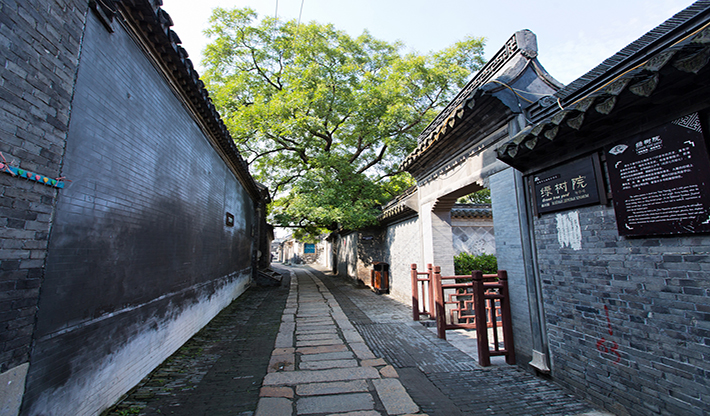Home > Spots
Qintong Ancient Town

The Qintong Ancient Town is located on the border of Taizhou, Yancheng and Nantong. As surrounded by many rivers, brooks and ports, for a bird’s eye view, it seems like “nine dragons paying homage to the imperial palace”. An ancient canal passing through the town called Salt Transportation River, which has been the hub of salt and water transport hundreds and thousands of years before. Till today, it is a busy port. The ancient town is relatively small, covering only 0.54 square kilometers.
Qintong is one of the pot-bottom lands in Jiangsu province, and is the national wetland ecological preservation area with clean and clear water. It is the junction of Yangtze River System and Huai River System. Its aquatic products are of high quality and delicious due to the water biomass is rich in nutrition. It must be unforgettable after you try them. Till today, it is still a paradise for fishermen. The wholesale market for aquatic products is in the east bank of the river, from where the Eight Tasty Food in Qin Lake are delivered to the whole country. Especially the fish cakes and shrimp balls represented by the brand Mashipu are the delicacies on tables.
The water of Qin Lake not only brings abundant gifts of substance, but also the smartness and elegance to Qintong inhabitants. It has bred numerous famed litterateurs and generals. Now please turn your eyes to this “Double No. 1 Scholars Attic”, which is as famous as sightseeing of the “View the Returned Fishman From Dongguan".
The Liu family in Yanzidun on the southern bank of Qin Lake has bred “Five Generals and Two Number One Scholars in Three Imperial Exams”, which has been a proud of the fellow villages and widely spread for more than 500 years form Ming to Qing Dynasty. In modern times, the 2 brothers, Li Deren and Li Deyi, are both the academicians with five titles. Talents and scholars in ancient times and today are like the bright stars on Qin Lake.
The Qintong Ancient Town has the largest and best-preserved ancient residential clusters in the middle part of Jiangsu. The ancient buildings cover about 60,000 square meters, including more than 20,000 squares ancient residences with the styles of Ming and Qing Dynasty. The grinded eave, thick gable wall, roof decorated with images of raptors and birds, bucket arch, partition door, caved window, small bridge over the flowing brook, ancient well in the courtyard, granite paved street, backroom and fire fighting lane, brick carving, wood carving, clay sculpture, and plaster decoration are the unique features of the traditional architecture in the ancient town.